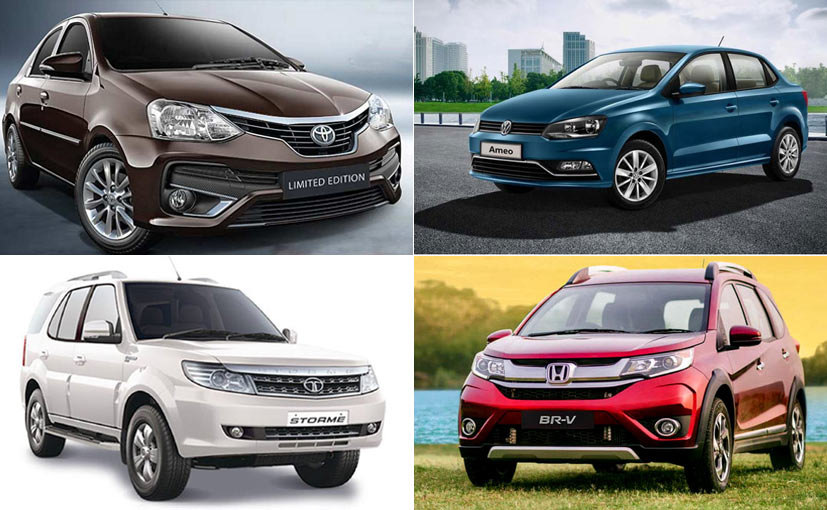It’s a new financial year and despite the adverse market conditions the Indian automobile industry has made a successful transition from BS4 to BS6 emission norms. In its order back in 2018 the Supreme Court had mandated that post 31st March 2020, no BS4 compliant vehicles would be registered in the country. From now only cars and bikes with BS6 compliant and therefore more environment-friendly engines can be registered in the country. In the process, automobile companies have decided to pull the plug on many vehicles as they haven’t been given BS6 upgrades and that is a pretty long list. It has cars that include everything from small hatches to big SUVs. Let’s tell you more about some significant set of wheels which won’t be seen in the showrooms anymore.
Tata Safari Storme
The iconic Safari Storme managed to build a cult status for itself over the years, the list of admirers is long and the SUV is no less than a legend for many. The car was originally christened the Safari and was first launched way back in 1998. It was the 2012 facelift of the SUV which was called the Safari Storme. Owing to its varied capabilities of taking on varied terrains the SUV was a darling of civilians and defence forces alike. But with arrival of SUVs like the Harrier and the Hexa, the Storme had to make way.
Toyota Corolla Altis
The Toyota Corolla Altis has been one of most consistent performers in the segment mid-sized sedan segment for a long time. Even at a time when there has been a huge shift towards all kinds of SUVs, the car has clocked decent sales. Then came the Yaris which was feature loaded product and was more affordable for the consumer too and Toyota thought the former would be the better bet in the rapidly changing market dynamics.
Honda BR-V
The seven-seater BR-V was launched as a cross version of Honda Mobilio and met with instant success in the Indian car market when it came in 2016. It was an affordable MPV with great looks, was loaded with features and came from a reputed brand and that made it quite popular with the customers. The car had Petrol and Diesel engine options along with a CVT variant and that only helped its fortunes. Too bad Honda decided it didn’t deserve a BS upgrade.
Renault Lodgy
This Renault Lodgy MPV also showed a lot of promise when it was launched five years ago. It was an affordable seven-seater that just about had the features expected in the segment. It also came with a frugal and fuel-efficient diesel engine. The frequent comparisons with the Toyota Innova though didn’t help as the car just wasn’t in the same league. With Renault deciding against making their Diesel engine BS6 compatible, the Lodgy story unfortunately saw an uneventful end.
Tata Zest
Launched way back in 2014, the Zest compact sedan from Tata Motors was one of the first cars to come with company’s new Impact design philosophy. But the going was tough right from the start as this — with cars like Maruti Suzuki Dzire and Hyundai Xcent — certainly was one of the toughest segments to be in. A few years later came the more advanced Tigor that looked better and had more features. And it was Tigor that was chosen by Tata Motors for a BS6 upgrade.
Volkswagen Ameo
Another late entrant to the competitive sub-compact sedan was the Volkswagen Ameo. It had some lovely engines and a fantastic gearbox which the enthusiasts still swear by, but the car could just not set the cash registers ringing for Volkswagen. It was also priced slightly on the higher side and some well performing rivals meant the Ameo just could not take off.
Toyota Etios/Liva
The sale numbers the Toyota Etios sedan or the Liva hatchback garnered were consistent but never to Toyota’s liking. These were the most affordable cars from the brand in India, yet were never able to see runaway success. For one they were overpriced for what they offered in terms of quality. And then the Etios became popular in the taxi segment which pulled personal car buyers further away from it. A facelift was attempted and even that couldn’t pull consumers towards it in big numbers.

